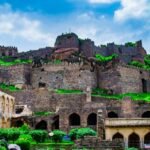On his 71st death anniversary, December 15, 2021, Prime Minister Narendra Modi paid tribute to Sardar Vallabhbhai Patel. Sardar Vallabhbhai Patel, also known as the “Iron Man of India,” was India’s first deputy Prime Minister. He was a pivotal figure in the Indian independence struggle, particularly in terms of uniting the country after independence.
Image credits: Pexels
Tributes flooded in from India’s top government officials, including the Prime Minister and Vice President. “Remembering Sardar Patel on his Punya Tithi,” PM Modi tweeted. India will always be grateful to him for his outstanding service, administrative abilities, and unwavering attempts to bring our country together.
Vice President M Venkaiah Naidu tweeted, “Remembering the iconic freedom fighter, ‘Iron Man of India’ #SardarVallabhbhaiPatel on his Punya Tithi today. He was a towering statesman and an illustrious leader who cared deeply for the welfare of the farmers and worked incessantly for the uplift of the downtrodden.”
The Vice President also hailed Sardar Patel’s monumental role in the peaceful integration of over 560 princely states by calling him the ‘ Unifier of India’. “His legendary life continues to inspire every Indian to work towards strengthening the unity & integrity of the nation and eliminating social evils from society,” VP Naidu added.
Sardar Vallabhbhai Patel is called the ‘unifier of India’ as he had played a key role in the integration of all princely states into the Indian Union.
Also check out: Reservation System of India – Facts & Opinion
Patel was a key figure in the Congress party. He began his career as a lawyer and quickly became active in the country’s war for independence. He was India’s first Home Minister and Deputy Prime Minister after independence. He is renowned and credited as the Iron Man of India for his political acumen and efforts to merge the princely kingdoms into the Union of India.
Why is Sardar Patel known as India’s Unifier?
He is known as the “Unifier of India” because he was instrumental in the union of all princely states into the Indian Union. The British mission suggested two power-transfer schemes, one of which was the 16 May 1946 plan, which advocated a loose federation with significant provincial autonomy and province grouping based on religious majority.
The plan called for India to be partitioned along religious lines, with the 565 princely states having the option of joining India or Pakistan or remaining independent. After much deliberation and criticism, the idea was approved.
Several Indian nationalists feared that if these princely kingdoms did not join the Indian Union, the majority of the country’s population and land would be divided. Sardar Vallabhbhai Patel was in charge of the princely kingdoms’ assimilation into India. This is why he is recognised as India’s “unifier.”
Patel was thought to be the ideal guy for the job of bringing the Indian dominion to the princely nations. Patel induced the princes of 565 kingdoms to join the union by offering them favourable terms, such as the establishment of privy purses for the rulers’ descendants. He did not govern by force, but he did urge the rulers to act out of patriotism.
Also check out: The Chronology of ARTICLE 370: You need to know
He gave the princely states till August 15, 1947, to sign the instrument of accession paper. Except for three princely states—Jammu and Kashmir, Junagadh, and Hyderabad—every other princely state freely joined the Indian Union.
Hyderabad was the largest of all princely states, encompassing parts of Telangana, Karnataka, Andhra Pradesh, and Maharashtra in modern times. Patel was born in Gujarat, and Junagarh was his home town. The Nawab of Junagadh had acceded to Pakistan under the duress of Naaz Bhutto, although the city was far from Pakistan and its population was overwhelmingly Hindu. Under the guidance of Patel, India took control of Junagadh by mixing diplomacy and force.
Similarly, under Operation Polo, Hyderabad was forcibly absorbed into the Indian Union. Allowing Hyderabad to remain an independent nation surrounded by India, Patel contended, would not have made Hindus or Muslims in the city any happier.
Sardar Vallabhbhai Patel was one of the most influential figures of India in the 20th century. To honour his legacy, ‘Statue of Unity’ – the world’s tallest statue- was unveiled in 2018. It is located on the banks of the Narmada River in Gujarat.
Also check out: How to maintain good skin?
Some Lesser-known facts about him:
- Patel passed his matriculation when he was about 22 years old.
- He wasn’t interested in politics initially. It was after meeting Gandhi in 1917 that he was motivated to quit his job and join the Independence struggle.
- Sardar Vallabhbhai Patel advocated Swaraj or self-rule and organized peasants in Gujarat in non-violent civil disobedience against the British.
- Sardar Vallabhbhai Patel worked extensively for the rights of minorities and women, and against untouchability and caste discrimination.
- He is credited for the political integration of over 500 princely states into the independent Indian Union.
- The Statue of Unity, unveiled by PM Modi, stands on the banks of the Narmada river. It is 182m high, making it the tallest in the world. The statue was built at a cost of Rs 2,989 crore.
- Sardar Vallabhbhai Patel was posthumously awarded the Bharat Ratna in 1991.
- His birthday (October 31st) is celebrated as Rashtriya Ekta Divas (National Unity Day).




